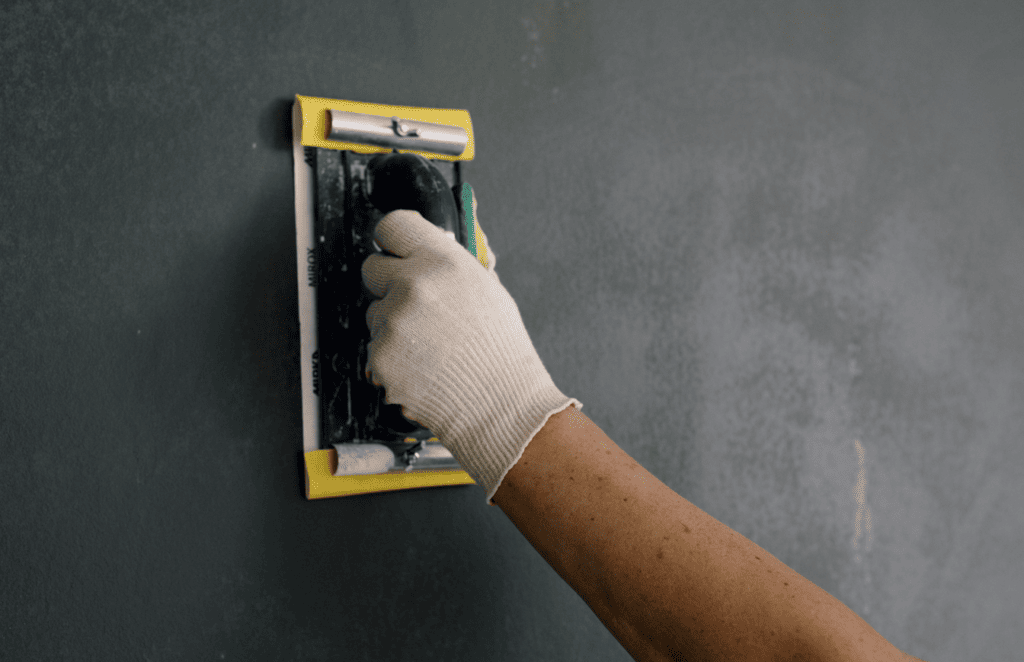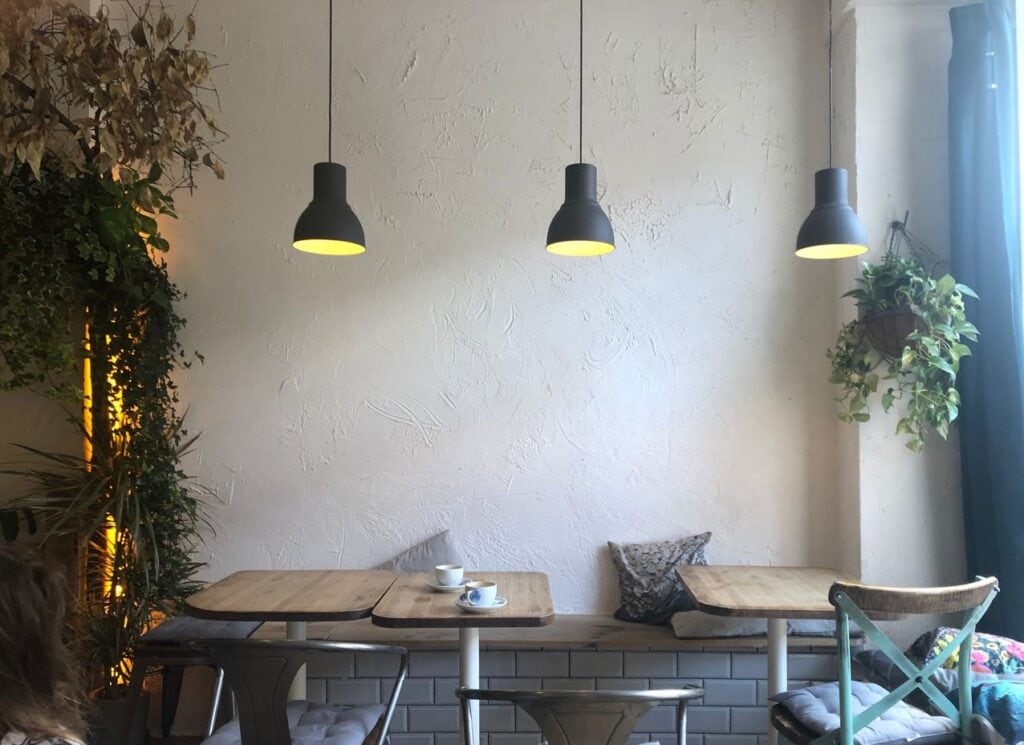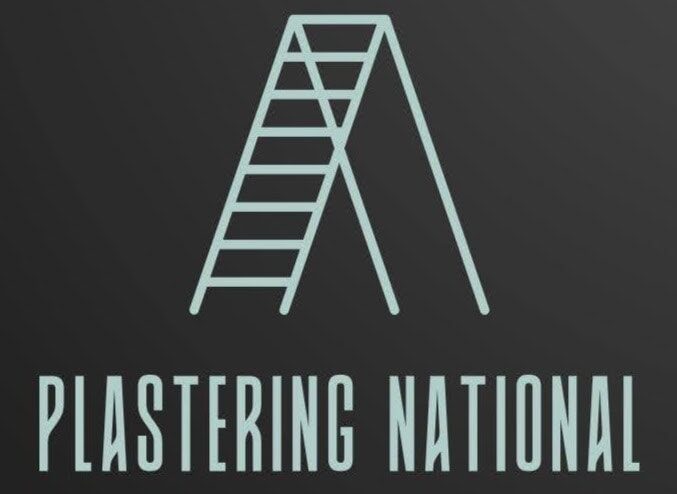For many reasons, plastering walls is the material of choice when it comes to completing interior surfaces. Plastering offers a smooth and seamless finish, which is one of the key advantages. A room can gain a more refined and attractive appearance with this. Plastering also aids in hiding surface flaws like cracks and unevenness, giving the area a smoother look overall.
The longevity of plastered walls is yet another perk. Plaster is perfect for heavily used areas since it is durable and long-lasting, being able to resist daily wear and tear. Plastering also helps with temperature regulation and soundproofing by providing some insulation. Plastering can also increase a wall’s fire resistance, which is a further safeguard.
There are a few downsides to plastering walls, despite all the benefits. Plastering takes time and money, which is one of the major drawbacks. It may take a lot of time and effort to plaster a wide area, and you might need a professional’s help if you want a good result. Furthermore, not all surfaces are good candidates for plastering, and priming and other preparations may be necessary to get a good adhesion.
The possibility of cracking over time is another drawback of plastering walls. Plaster is long-lasting, yet it can still crack in places where the building settles or moves. In order to keep the walls looking good, it may be necessary to fix cracks in the plaster. Plastering walls has numerous advantages, but before you decide it’s the best option for your project, you need think about the disadvantages.
Advantages Of Plastering Walls
Strong and Extra Thick Plaster Walls
Plastering a wall makes it sturdy and long-lasting, and it’s easy to paint over it to make it look how you want it to. Painting over plaster won’t harm your walls because it doesn’t absorb moisture like moss can. Given enough quantity and thickness, plaster can even act as a soundproofing material for walls.
You Can Easily Clean Plaster
The resilient quality of plaster makes it incredibly easy to clean up, even in the most challenging areas. You can clean plaster repeatedly without worrying about damaging the surface because its surface doesn’t crack. The use of plaster as a wall coating has persisted for quite some time, and this is due in large part to the material’s longevity and the numerous advantages it provides.
A Classier Appearance
Plaster is a great material to utilise if you would like to make your house seem more refined. Plaster has a long history of use and is still used today by builders and homeowners who want their structures to look antique. Plaster is a great material to employ for walls that need to be aesthetically pleasing.
Resilience
Plaster may outlive drywall in durability and wear and tear if mixed and applied properly. In the plaster mixture, a chain reaction starts when the water evaporates and the mixture is heated, forming strong bonds within the mixture. Plaster is typically more durable and resistant to damage.
There is a correlation between the plaster’s strength and the lath or support that holds it in place. The thin strips of wood lath used in earlier homes have been generally replaced by sturdy backing boards or metal laths, which are more long-lasting.
Plaster adds a touch of class and longevity to walls. When mixed and put correctly, plaster outlasts drywall in strength and durability. When water evaporates from plaster, a chemical process fortifies the material. Typically, plaster lasts longer. The strength of plaster is affected by the lath wrapped around it. Compared to metal or hardboard, thin strips of wood utilised for ancient homes are not as long-lasting.
Stylisation and Looks
Having perfectly level walls won’t make your lovely house complete. You can tell your home is healthy because of the richness of the plaster. Plaster moulds are inexpensive and give your walls and ceiling a “Wow!” factor. When picking plaster moulds, it’s crucial to consider style, colour, size, and style. A subtle shift in hue or saturation would elevate it to the level of art.
Varied Designs
There are a great deal of distinct styles to choose from. Plaster has the potential to be advantageous for a wide range of architectural elements, including but not limited to cornices, columns, archways, domes, panels, ornate corbels, vents, panels, acoustic ceiling tiles, and fireplaces. In addition to having a great degree of plasticity, plaster can be sculpted into the shapes that individuals choose.
Easy Installation
One benefit of plaster is its setup. Installation is a breeze because it doesn’t create dust unless water is introduced to the powder. Plaster is easy to work with and doesn’t need sanding. No sanding is required, and you can apply many coats before the first one dries. Building walls with plaster is more efficient and less messy.
Reduces Background Noise and Fire Risk
Plaster and lath are noisier than drywall. The combination of lime plaster’s density and the acoustic qualities of the random wall shapes makes it a superior sound absorber compared to fresh gypsum board. Just like drywall, lime plaster has a reputation for being fire resistant. This is because carbonated lime, after curing for months, spreads fire more slowly. A building’s oxygen supply is reduced as a fire travels through its many levels.
In these particular contexts, plaster could be considered:
- The interior and outside of high-quality custom-built residences can be finished with plaster.
- Creating an architectural appearance with plaster is necessary in this opulent workplace.
- Particularly designed store space for speciality items. Extra attention to interior detail is necessary in many retail settings, including restaurants, shops, and fashion jewellery stores.
- Generally speaking, public structures and organisations organisations have lengthy expected lifetimes.
- Plaster is a great material for the inside of long-lasting structures like synagogues, churches, universities, and government buildings.
- Any drywall can be plastered to make it stronger and give it a more robust appearance. The chemical reaction during the procedure is an essential step in fortifying the bond and walls.
- Making a flat surface is helpful for painting. The wall will appear better when you paint it.
- Plastering a wall allows one to make patterns and textures on the surface.
- Work is completed efficiently and punctually.
- Pesticides are not released during the plastering process.
- It leaves surfaces with a flawless polish and is less likely to break them.
FAQs About Plastering
Are Plastering Walls More Expensive Than Other Wall Finishing Options?
Yes, plastering walls can be more expensive upfront due to the cost of materials, skilled labour, and additional preparation and application time required compared to some alternative wall finishing options.
Can Plastered Walls Be Prone To Cracking Or Delamination?
Yes, plastered walls can be prone to cracking or delamination if not properly applied or maintained, especially in areas with high humidity or structural movement. Proper surface preparation, application techniques, and maintenance can help mitigate these issues.
Are Plastered Walls Susceptible To Moisture Damage?
Plastered walls can be susceptible to moisture damage if exposed to excessive moisture or water infiltration. Proper waterproofing measures and regular maintenance are essential to prevent moisture-related problems.
Do Plaster Walls Require Regular Upkeep?
Yes, plastered walls may require periodic maintenance such as repainting, patching cracks or imperfections, and addressing any signs of moisture damage to ensure their longevity and appearance.
Are There Alternatives To Plastering Walls That Offer Similar Benefits?
Yes, alternatives to plastering walls include drywall, wood panelling, wallpaper, and decorative wall coverings, each with its advantages and disadvantages depending on the desired aesthetic, budget, and maintenance requirements.
Disadvantages Of Plastering Walls
Painting Over Plaster Is Not Always Easy
Plaster has a porous surface, which makes it a challenging medium to paint on. Despite the fact that it has a tremendous deal of artistic potential, working with plaster may be challenging. Although plaster is a long-lasting material that is also an excellent painting medium, it is likely that two coats of plaster will not be adequate to create the desired effect. This is despite the fact that plaster is a sturdy material. Plaster is typically a superb selection; nonetheless, painting it may demand extra patience on your part, despite the fact that it is frequently desired.
Installation
The process of cutting and sanding drywall will ultimately result in the generation of a considerable amount of dust. The joint compound needs to be allowed to dry for a number of days before a new layer of drywall smoothing compound is applied. This process must be repeated multiple times. Plaster dust can only be produced by the combination of the powder and water, as there is no alternative method available. It is possible to apply many coats before the base layer dries, and sanding is not required under these conditions. Sanding is not required. Plaster walls, despite the fact that they are easier to install and make less mess, nevertheless require a certain degree of knowledge and skill, in addition to a substrate made of steel mesh or wood lath. Plaster walls are also more difficult to install than other types of walls.
Not easy to fix
Plaster repair becomes more valuable when finding a professional plaster firm becomes more challenging. It is necessary to remove a substantial amount of plaster from the wall for many repairs.
When plaster breaks or crumbles due to shifting structures or a hard hit, it must be scraped or cut off without harming the unharmed wall. The backing and damaged lath also need to be replaced. Because of the natural colour change in plaster with age, it is important to paint the entire wall following repairs to hide any new areas.
Cost
Even though drywall installation and finishing require more workforce, plastering is usually less expensive than drywall. Workers with training in the art of plaster application usually charge extra for their services because of their particular expertise.
Since veneer plaster only requires one finishing coat of plaster on top of a backing board, it is more cost effective than traditional two- or three-coat surfaces. Despite veneer coverings’ reduced damage resistance, their prices are sometimes comparable to drywall.
The installation of plaster walls is more labour-intensive and expensive than that of drywall. Even though it could take days for the drywall compound to dry and the project to go over budget, the real labour cost is less than plaster. Sanding the drywall is one of three processes in the process. Even though plaster doesn’t require sanding and the job can typically be finished in a day, the process involves significantly more labour.
Easier Installation
The cutting and sanding of drywall creates a tremendous quantity of dust. Finishing the drywall smooth takes days because the joint compound, which seals board joints, must cure. Except for the initial tiny amount emitted when water is mixed with plaster powder, the material does not emit dust. Additionally, sanding is not necessary, and it is common practice to apply subsequent coats before the first one dries entirely. Plaster walls are easier to work with and require less cleanup time.
The cutting and sanding of drywall creates a tremendous quantity of dust.
Additionally, sanding is not necessary, and it is common practice to apply subsequent coats before the first one dries entirely.
Grows, Splits, and Droops
Plaster continues to cure and gets more hard and brittle as it ages, which increases the possibility that surface cracking will occur. Plaster also continues to cure. Plaster has the potential to readily cause deep fractures that require repair in the event that the foundation of a house shifts. These fractures can be expensive to fix. There is another possibility that damage that takes place beneath the surface of the plaster could be the cause of the drooping of old plaster from the walls or ceiling.
Inconvenience
Regarding plaster walls, maintenance may be a real pain in the neck. It is necessary to drill pilot holes and place anchors to hang televisions or pictures, for example. There is a requirement for both of these steps. Walls made of textured plaster might be challenging to clean because of their characteristics. Cutting into a wall to install new electrical wiring or to access plumbing that is located behind the wall is a more significant undertaking when compared to removing the drywall. This is because cutting into a wall would require access to the plumbing. Plaster can penetrate the lath that is responsible for putting insulation in place, which makes it difficult to retrofit into exterior plaster walls, given that plaster can work its way through the lath.
Conclusion
Plaster is a popular wall covering material due to its strength, durability, and aesthetic appeal. It is often used in older dwellings, especially historic houses, and can be easily cleaned and maintained. Plaster adds a classier appearance to walls, making them more refined and resistant to damage. When mixed and applied correctly, plaster outlasts drywall in strength and durability. The strength of plaster is affected by the lath or support that holds it in place.
Plaster moulds are inexpensive and can be customized to create unique designs for various architectural elements. Plaster is easy to install, as it doesn’t create dust or require sanding. It can be applied multiple times before the first coat dries, making building walls more efficient and less messy.
Plaster reduces background noise and fire risk, as it is a superior sound absorber compared to drywall. It is also fire-resistant, as carbonated lime spreads fire more slowly after curing. Plaster is suitable for high-quality custom-built residences, opulent workplaces, and retail settings with long expected lifetimes.
In general, plaster is a great material for the interior of long-lasting structures like synagogues, churches, universities, and government buildings. However, it has some disadvantages, such as the need for proper preparation and the potential for mold growth. It is also important to consider the potential risks associated with using plaster, such as the potential for mold growth and the potential for damage to the wall.
Plaster is a porous material with artistic potential, but it can be challenging to paint due to its porous surface. Despite its durability, two coats may not be enough to achieve the desired effect. Plaster installation involves cutting and sanding drywall, which generates a significant amount of dust. Sanding is not required, and plaster walls require a certain level of knowledge and skill. Plaster repair becomes more valuable when finding a professional plaster firm, as it requires removing a substantial amount of plaster from the wall.
Plaster is generally less expensive than drywall installation and finishing, with workers with plaster application training charging extra for their services. Veneer plaster is more cost-effective than traditional two- or three-coat surfaces, but the installation process is more labor-intensive and expensive.
Plaster walls are easier to work with and require less cleanup time, but they can also grow, split, and droop as it ages. Plaster can cause deep fractures that require repair if the foundation shifts, and damage beneath the surface can cause drooping.
Maintenance can be a pain in the neck, as drilling pilot holes and placing anchors for hanging items can be difficult. Decorative plaster walls can be difficult to clean, and cutting into a wall for electrical wiring or accessing plumbing is more challenging than removing drywall.
Content Summary
- Plastering walls enhances the aesthetic appeal of a house, offering a classy touch.
- Consultation with a professional plasterer or thorough research is recommended before DIY plastering.
- Proper application of plaster maximizes its durability and resistance to wear and tear.
- Plaster, a traditional wall covering, is commonly found in historic houses, blending antiquity with durability.
- Plaster offers homeowners various advantages, including strength, longevity, and aesthetic appeal.
- Strong and thick plaster walls provide durability and serve as a sturdy base for painting.
- Plaster walls are moisture-resistant, ensuring paint adherence and preventing moss growth.
- Easy cleaning of plaster surfaces adds to its appeal, maintaining a pristine appearance.
- Plaster’s longevity contributes to its enduring popularity among builders and homeowners.
- Plaster enhances a house’s sophistication, offering a refined appearance.
- Resilient plaster outlasts drywall, offering superior durability and damage resistance.
- The choice of lath affects the strength and longevity of plaster walls.
- Plaster moulds add character to walls and ceilings, enhancing visual appeal.
- Plaster offers a variety of designs, suitable for various architectural elements.
- Easy installation of plaster reduces construction time and mess.
- Plaster walls provide soundproofing benefits, reducing background noise.
- Plaster’s fire-resistant properties make it a safe choice for building interiors.
- Plaster is ideal for custom-built residences, workplaces, and retail spaces.
- Plaster complements the interior of long-lasting structures like churches and government buildings.
- Plastering enhances the strength and appearance of walls, facilitating painting.
- Plastering allows for creating patterns and textures on wall surfaces.
- Efficient and timely completion of plastering projects is achievable.
- Plastering does not release harmful pesticides into the environment.
- Plaster leaves surfaces with a flawless finish, minimizing breakage risks.
- Painting over plaster can be challenging due to its porous surface.
- Plaster installation requires careful handling to minimize dust generation.
- Plaster repair can be complex and may require professional expertise.
- Repairing plaster involves scraping and replacing damaged sections, followed by painting.
- Plastering costs are typically lower than drywall installation.
- Veneer plaster offers a cost-effective alternative to traditional plastering methods.
- Plaster installation is labour-intensive but offers long-term benefits.
- Drywall installation generates significant dust, unlike plaster.
- Plaster walls are easier to work with and require less cleanup than drywall.
- Plaster’s curing process can lead to surface cracking and drooping over time.
- Cracks in plaster may require costly repairs, impacting maintenance efforts.
- Maintenance of plaster walls can be inconvenient due to drilling and anchoring requirements.
- Textured plaster walls pose challenges for cleaning and maintenance.
- Accessing plumbing or electrical wiring behind plaster walls requires meticulous planning.
- Plaster’s ability to penetrate lath complicates retrofitting insulation in exterior walls.
- Plaster offers a durable and visually appealing option for wall coverings.
- Proper application techniques are essential for maximizing plaster’s strength and longevity.
- Plaster moulds add decorative elements to walls and ceilings, enhancing architectural aesthetics.
- Plaster walls provide superior soundproofing compared to drywall.
- Plaster’s fire-resistant properties make it a safe choice for residential and commercial interiors.
- Plastering is suitable for various architectural elements, offering versatility in design.
- Plastering enhances the durability and resilience of walls, ensuring long-lasting performance.
- Plaster walls require careful maintenance to prevent surface cracking and drooping.
- Plaster repair may be challenging and require professional expertise.
- Despite its challenges, plaster offers a cost-effective and visually appealing option for wall coverings.
- Plastering requires skill and attention to detail but offers enduring benefits in terms of durability and aesthetics.



